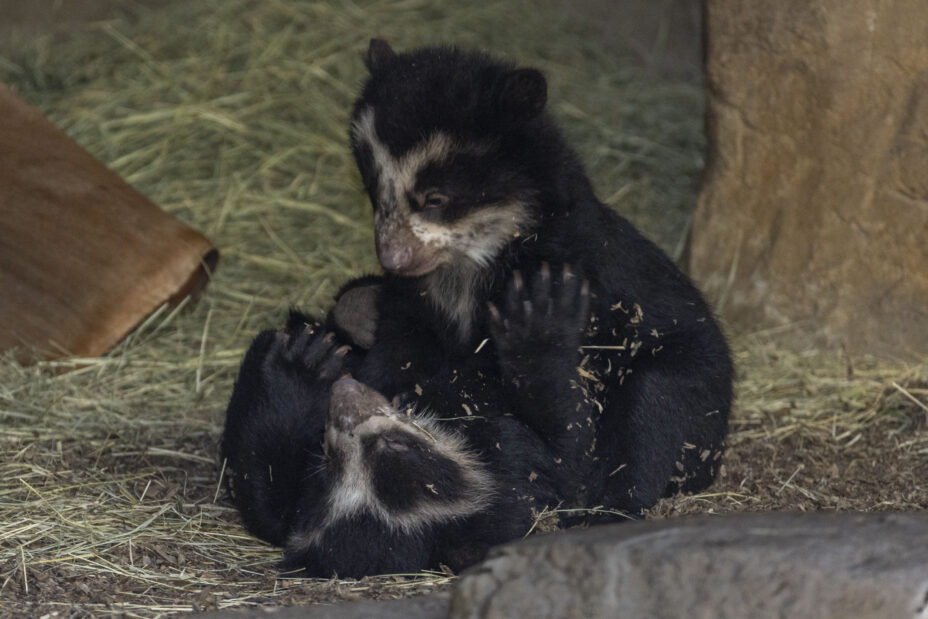Andean Bear Cub Twins Born at the San Diego Zoo—a First in Nearly 30 Years
The San Diego Zoo continues to celebrate the arrival of twin Andean bear cubs—now three months old and venturing out of their private den into the guest-facing habitat. The cubs were born in December 2022 to second-time mother Alba, and sire Turbo. Since the twins’ birth, wildlife care specialists have been closely observing the bears via a closed-circuit video camera and an audio baby monitor, allowing Alba to care for her youngsters without interruption until they were ready to leave the den.
The arrival of Alba’s cubs marked the first time that twin Andean bear cubs have been born at San Diego Zoo since 1993—when Alba’s grandmother, Houdini, gave birth to twins Sombra and Quixote. Alba previously gave birth to a male cub named Agapito in 2020—and he was the first Andean bear cub born at San Diego Zoo since 1993.
“We couldn’t be more thrilled about the birth of Alba’s twin cubs,” said Tammy Batson, lead wildlife care specialist at the San Diego Zoo. “We witnessed Alba transition beautifully into motherhood with her first cub a couple of years ago, and now as a second-time mother with twins, she continues to impress us with her attentiveness. She’s a proven mom, who now has both hands full.”
Like other newborn bears, Andean bear cubs are helpless and entirely dependent on their mothers. Alba cared for and bonded with her cubs in their den for the first few months, behind their guest-facing habitat and off public view. In their native South American forests, Andean bear cubs typically leave their dens at around 3 months of age and are believed to remain close to their mothers for at least the first year. Wildlife care specialists continue to monitor Alba and her cubs, who have access to both their den and outdoor habitat.
The Andean bear is listed as Vulnerable on the International Union for Conservation of Nature Red List of Threatened Species. The main threats to this species are habitat loss and fragmentation, challenges to human-wildlife coexistence and poaching. Andean bear habitat is being lost at a rate of approximately two-to-four percent per year due to climate change, mining and lumber operations, and farming. The bears are protected by international trade laws, but they are still illegally hunted for their meat, fat and body parts. It is unclear how many bears remain in their native habitat, with estimates ranging from 2,500 to 10,000 adults.
The birth of these two cubs is significant for conservation research. Although Andean bears are typically diurnal, very little is known about them in their native habitat, because of their shy nature and tendency to avoid people. The bears are native to Andes Mountain countries from Venezuela to Bolivia, typically living in dense and rugged forests, as well as grasslands and scrublands. San Diego Zoo Wildlife Alliance now has yet another opportunity to learn more about the interactions between a mother and her cubs, as well as cub development. Andean bears in human care serve as a safety net for dwindling populations in native habitats, and give biologists a chance to answer a myriad of biological questions about the species, develop noninvasive methods for use in field conservation work, and better understand Andean bear physiology and behavior, to support the population.

Category: Animals, Donations, Local News, Nonprofit







